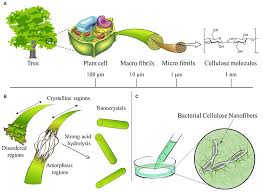
Cellulose Suspension Applications: Unlocking the Potential of Biomaterials
Cellulose suspension, a dispersion of cellulose fibers in a liquid medium, is gaining attention across various industries due to its eco-friendly nature, versatility, and unique properties. Derived from plant-based sources, cellulose suspensions are paving the way for sustainable and high-performance solutions in numerous applications.
What is Cellulose Suspension?
Cellulose suspension is a mixture of cellulose fibers, ranging from micro to nanoscale, evenly distributed in water or other liquids. Depending on the processing method and fiber size, cellulose suspensions can take the form of microfibrillated cellulose (MFC) or nanocellulose. These suspensions exhibit exceptional strength, flexibility, and thermal stability.
Key Properties of Cellulose Suspension
- High Strength-to-Weight Ratio:
- Provides excellent mechanical properties while remaining lightweight.
- Biodegradability:
- Fully biodegradable, making it a sustainable alternative to synthetic materials.
- Renewability:
- Derived from renewable plant resources, contributing to circular economy practices.
- Thermal Stability:
- Maintains stability under varying temperature conditions.
- Rheological Properties:
- Can modify the viscosity and flow behavior of products, enhancing their performance.
- Barrier Properties:
- Acts as an effective barrier against gases and liquids, ideal for packaging applications.
Applications of Cellulose Suspension
- Packaging:
- Used in biodegradable and compostable packaging materials to replace plastic.
- Paper and Pulp Industry:
- Enhances the strength, smoothness, and printability of paper products.
- Food and Beverages:
- Acts as a thickening agent, stabilizer, and emulsifier in food products.
- Pharmaceuticals and Cosmetics:
- Used as a drug delivery system, thickener, and stabilizer in creams, gels, and lotions.
- Construction Materials:
- Reinforces cement and concrete, improving mechanical properties and reducing weight.
- Textiles:
- Incorporated into fabrics for enhanced strength, flexibility, and moisture-wicking properties.
- Energy Storage:
- Utilized as a component in batteries and supercapacitors due to its lightweight and conductive properties.
- 3D Printing:
- Acts as a bio-based material for sustainable 3D printing applications.
- Coatings and Films:
- Used in creating transparent, flexible, and biodegradable coatings for various surfaces.
Advantages of Cellulose Suspension
- Eco-Friendly:
- Reduces reliance on fossil-based resources and minimizes environmental impact.
- Versatile:
- Applicable in diverse industries, ranging from packaging to energy storage.
- Sustainable:
- Supports circular economy models through renewability and biodegradability.
- Improves Product Performance:
- Enhances mechanical and functional properties of end products.
- Customizable:
- Can be tailored for specific applications through surface modification and processing.
Challenges in Using Cellulose Suspension
- Processing Complexity:
- Requires advanced techniques for uniform dispersion and functionalization.
- Cost:
- High production costs can limit its adoption in price-sensitive markets.
- Compatibility:
- Integrating cellulose suspension with existing materials can present technical challenges.
- Stability:
- Maintaining long-term stability in liquid form requires optimization.
Future Directions
- Advanced Manufacturing:
- Research into cost-effective and scalable production methods to broaden accessibility.
- Functionalized Cellulose:
- Developing chemically modified cellulose for enhanced properties and applications.
- Energy Applications:
- Expanding use in batteries, fuel cells, and lightweight composites for renewable energy solutions.
- Smart Materials:
- Integration into responsive and adaptive materials for high-tech applications.
- Global Collaboration:
- Promoting partnerships to scale up production and reduce costs.
Conclusion
Cellulose suspension is a versatile and sustainable material with immense potential across various industries. Its unique properties and eco-friendly nature make it a key player in advancing green technologies and sustainable practices. As research continues to optimize its production and applications, cellulose suspension is poised to revolutionize industries ranging from packaging to energy storage, contributing to a more sustainable future.
